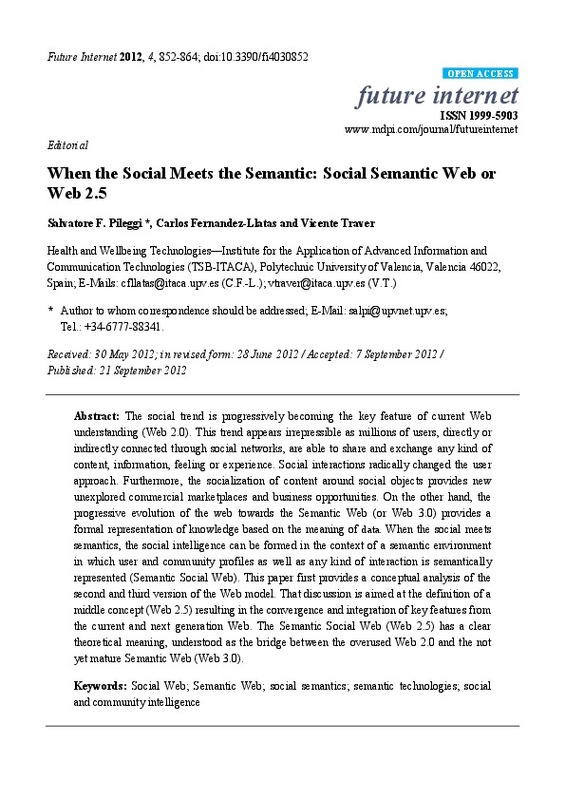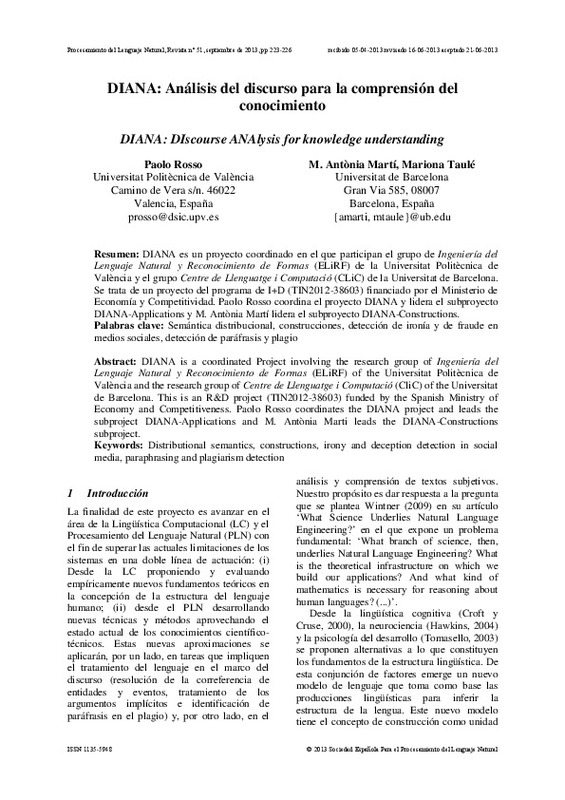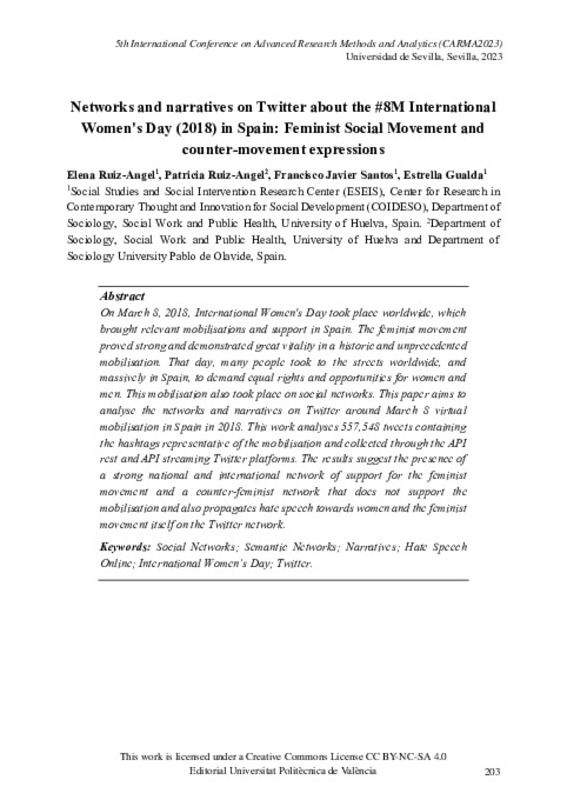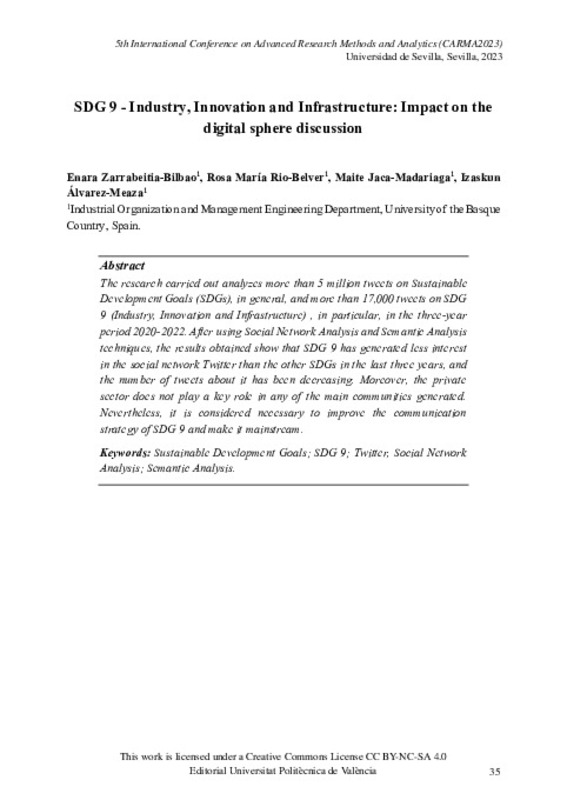JavaScript is disabled for your browser. Some features of this site may not work without it.
Buscar en RiuNet
Listar
Mi cuenta
Estadísticas
Ayuda RiuNet
Admin. UPV
When the Social Meets the Semantic: Social Semantic Web or Web 2.5
Mostrar el registro sencillo del ítem
Ficheros en el ítem
| dc.contributor.author | Pileggi, Salvatore Flavio
|
es_ES |
| dc.contributor.author | Fernández Llatas, Carlos
|
es_ES |
| dc.contributor.author | Traver Salcedo, Vicente
|
es_ES |
| dc.date.accessioned | 2015-09-23T10:55:41Z | |
| dc.date.available | 2015-09-23T10:55:41Z | |
| dc.date.issued | 2012-09-21 | |
| dc.identifier.issn | 1999-5903 | |
| dc.identifier.uri | http://hdl.handle.net/10251/55016 | |
| dc.description.abstract | The social trend is progressively becoming the key feature of current Web understanding (Web 2.0). This trend appears irrepressible as millions of users, directly or indirectly connected through social networks, are able to share and exchange any kind of content, information, feeling or experience. Social interactions radically changed the user approach. Furthermore, the socialization of content around social objects provides new unexplored commercial marketplaces and business opportunities. On the other hand, the progressive evolution of the web towards the Semantic Web (or Web 3.0) provides a formal representation of knowledge based on the meaning of data. When the social meets semantics, the social intelligence can be formed in the context of a semantic environment in which user and community profiles as well as any kind of interaction is semantically represented (Semantic Social Web). This paper first provides a conceptual analysis of the second and third version of the Web model. That discussion is aimed at the definition of a middle concept (Web 2.5) resulting in the convergence and integration of key features from the current and next generation Web. The Semantic Social Web (Web 2.5) has a clear theoretical meaning, understood as the bridge between the overused Web 2.0 and the not yet mature Semantic Web (Web 3.0). | es_ES |
| dc.language | Inglés | es_ES |
| dc.publisher | MDPI | es_ES |
| dc.relation.ispartof | Future Internet | es_ES |
| dc.rights | Reconocimiento (by) | es_ES |
| dc.subject | Social Web | es_ES |
| dc.subject | Semantic Web | es_ES |
| dc.subject | Social semantics | es_ES |
| dc.subject | Semantic technologies | es_ES |
| dc.subject | Social and community intelligence | es_ES |
| dc.subject.classification | TECNOLOGIA ELECTRONICA | es_ES |
| dc.title | When the Social Meets the Semantic: Social Semantic Web or Web 2.5 | es_ES |
| dc.type | Artículo | es_ES |
| dc.identifier.doi | 10.3390/fi4030852 | |
| dc.rights.accessRights | Abierto | es_ES |
| dc.contributor.affiliation | Universitat Politècnica de València. Departamento de Informática de Sistemas y Computadores - Departament d'Informàtica de Sistemes i Computadors | es_ES |
| dc.contributor.affiliation | Universitat Politècnica de València. Departamento de Ingeniería Electrónica - Departament d'Enginyeria Electrònica | es_ES |
| dc.description.bibliographicCitation | Pileggi, SF.; Fernández Llatas, C.; Traver Salcedo, V. (2012). When the Social Meets the Semantic: Social Semantic Web or Web 2.5. Future Internet. 4(3):852-854. doi:10.3390/fi4030852 | es_ES |
| dc.description.accrualMethod | S | es_ES |
| dc.relation.publisherversion | http://dx.doi.org/10.3390/fi4030852 | es_ES |
| dc.description.upvformatpinicio | 852 | es_ES |
| dc.description.upvformatpfin | 854 | es_ES |
| dc.type.version | info:eu-repo/semantics/publishedVersion | es_ES |
| dc.description.volume | 4 | es_ES |
| dc.description.issue | 3 | es_ES |
| dc.relation.senia | 237384 | es_ES |
| dc.description.references | Chi, E. H. (2008). The Social Web: Research and Opportunities. Computer, 41(9), 88-91. doi:10.1109/mc.2008.401 | es_ES |
| dc.description.references | Bulterman, D. C. A. (2001). SMIL 2.0 part 1: overview, concepts, and structure. IEEE Multimedia, 8(4), 82-88. doi:10.1109/93.959106 | es_ES |
| dc.description.references | Boll, S. (2007). MultiTube--Where Web 2.0 and Multimedia Could Meet. IEEE Multimedia, 14(1), 9-13. doi:10.1109/mmul.2007.17 | es_ES |
| dc.description.references | Fraternali, P., Rossi, G., & Sánchez-Figueroa, F. (2010). Rich Internet Applications. IEEE Internet Computing, 14(3), 9-12. doi:10.1109/mic.2010.76 | es_ES |
| dc.description.references | Lassila, O., & Hendler, J. (2007). Embracing «Web 3.0». IEEE Internet Computing, 11(3), 90-93. doi:10.1109/mic.2007.52 | es_ES |
| dc.description.references | Dikaiakos, M. D., Katsaros, D., Mehra, P., Pallis, G., & Vakali, A. (2009). Cloud Computing: Distributed Internet Computing for IT and Scientific Research. IEEE Internet Computing, 13(5), 10-13. doi:10.1109/mic.2009.103 | es_ES |
| dc.description.references | Mangione-Smith, W. H. (1998). Mobile computing and smart spaces. IEEE Concurrency, 6(4), 5-7. doi:10.1109/4434.736391 | es_ES |
| dc.description.references | Greaves, M. (2007). Semantic Web 2.0. IEEE Intelligent Systems, 22(2), 94-96. doi:10.1109/mis.2007.40 | es_ES |
| dc.description.references | Bojars, U., Breslin, J. G., Peristeras, V., Tummarello, G., & Decker, S. (2008). Interlinking the Social Web with Semantics. IEEE Intelligent Systems, 23(3), 29-40. doi:10.1109/mis.2008.50 | es_ES |
| dc.description.references | Definition of Web 2.0http://www.oreillynet.com/pub/a/oreilly/tim/news/2005/09/30/what-is-web-20.html | es_ES |
| dc.description.references | Zhang, D., Guo, B., & Yu, Z. (2011). The Emergence of Social and Community Intelligence. Computer, 44(7), 21-28. doi:10.1109/mc.2011.65 | es_ES |
| dc.description.references | Pentlan, A. (2005). Socially aware, computation and communication. Computer, 38(3), 33-40. doi:10.1109/mc.2005.104 | es_ES |
| dc.description.references | Staab, S., Domingos, P., Mika, P., Golbeck, J., Li Ding, Finin, T., … Vallacher, R. R. (2005). Social Networks Applied. IEEE Intelligent Systems, 20(1), 80-93. doi:10.1109/mis.2005.16 | es_ES |
| dc.description.references | The Semantic Webhttp://www.scientificamerican.com/article.cfm?id=the-semantic-web | es_ES |
| dc.description.references | Decker, S., Melnik, S., van Harmelen, F., Fensel, D., Klein, M., Broekstra, J., … Horrocks, I. (2000). The Semantic Web: the roles of XML and RDF. IEEE Internet Computing, 4(5), 63-73. doi:10.1109/4236.877487 | es_ES |
| dc.description.references | OWL Web Ontology Language Overviewhttp://www.w3.org/TR/owl-features/ | es_ES |
| dc.description.references | Vetere, G., & Lenzerini, M. (2005). Models for semantic interoperability in service-oriented architectures. IBM Systems Journal, 44(4), 887-903. doi:10.1147/sj.444.0887 | es_ES |
| dc.description.references | Fensel, D., & Musen, M. A. (2001). The semantic web: a brain for humankind. IEEE Intelligent Systems, 16(2), 24-25. doi:10.1109/mis.2001.920595 | es_ES |
| dc.description.references | Shadbolt, N., Berners-Lee, T., & Hall, W. (2006). The Semantic Web Revisited. IEEE Intelligent Systems, 21(3), 96-101. doi:10.1109/mis.2006.62 | es_ES |
| dc.description.references | Dodds, P. S., & Danforth, C. M. (2009). Measuring the Happiness of Large-Scale Written Expression: Songs, Blogs, and Presidents. Journal of Happiness Studies, 11(4), 441-456. doi:10.1007/s10902-009-9150-9 | es_ES |
| dc.description.references | Pang, B., & Lee, L. (2008). Opinion Mining and Sentiment Analysis. Foundations and Trends® in Information Retrieval, 2(1–2), 1-135. doi:10.1561/1500000011 | es_ES |
| dc.description.references | Thelwall, M., Buckley, K., & Paltoglou, G. (2011). Sentiment strength detection for the social web. Journal of the American Society for Information Science and Technology, 63(1), 163-173. doi:10.1002/asi.21662 | es_ES |
| dc.description.references | Blogmeterhttp://www.blogmeter.it/ | es_ES |
| dc.description.references | Christakis, N. A., & Fowler, J. H. (2010). Social Network Sensors for Early Detection of Contagious Outbreaks. PLoS ONE, 5(9), e12948. doi:10.1371/journal.pone.0012948 | es_ES |
| dc.description.references | Jansen, B. J., Zhang, M., Sobel, K., & Chowdury, A. (2009). Twitter power: Tweets as electronic word of mouth. Journal of the American Society for Information Science and Technology, 60(11), 2169-2188. doi:10.1002/asi.21149 | es_ES |
| dc.description.references | Bernal, P. A. (2010). Web 2.5: The Symbiotic Web. International Review of Law, Computers & Technology, 24(1), 25-37. doi:10.1080/13600860903570145 | es_ES |
| dc.description.references | Mikroyannidis, A. (2007). Toward a Social Semantic Web. Computer, 40(11), 113-115. doi:10.1109/mc.2007.405 | es_ES |
| dc.description.references | Jung, J. J. (2012). Computational reputation model based on selecting consensus choices: An empirical study on semantic wiki platform. Expert Systems with Applications, 39(10), 9002-9007. doi:10.1016/j.eswa.2012.02.035 | es_ES |











